Understanding Baker’s Math is crucial for making sourdough bread. It involves calculating ingredients based on the total weight of flour, making it easier to scale recipes and achieve the perfect loaf. However, manual calculations can be tedious and prone to errors.
This is where our calculator comes into play, simplifying the process of bread baking by automating the calculations. With our easy-to-use tool, you can focus on the art of sourdough baking, experimenting with different recipes and ingredients with confidence.
Key Takeaways
- Simplify your sourdough baking process with Baker’s Math.
- Use our calculator for precise measurements.
- Scale your recipes with ease.
- Achieve consistency in your sourdough bread.
- Experiment with different ingredients and recipes.
- Enhance your bread baking skills.
What Is Baker’s Math and Why It Matters
Understanding Baker’s Math is crucial for anyone looking to master the art of bread baking, from simple recipes to complex sourdough starters. At its core, Baker’s Math is a system that simplifies the way bakers think about recipes, making it easier to scale ingredient quantities up or down.
The Foundation of Professional Bread Baking
Baker’s Math is the foundation upon which professional bread baking is built. It allows bakers to easily adjust recipes to suit different batch sizes, ensuring consistency across various production scales. By expressing ingredients as percentages relative to the total flour weight, bakers can quickly scale recipes up or down without compromising on the quality of the final product.
Benefits for Home Bakers
For home bakers, Baker’s Math offers a range of benefits, including the ability to experiment with different ingredients and recipes with confidence. By understanding how to adjust ingredient ratios, home bakers can fine-tune their bread recipes to achieve the desired texture and flavor. As
“Baker’s Math takes the guesswork out of bread baking, allowing bakers to focus on the artistry of their craft.”
By adopting Baker’s Math, both professional and home bakers can improve their bread baking skills, ensuring that their creations are consistently delicious and of high quality.
Understanding Baker’s Math: The Basic Principles
Understanding Baker’s Math begins with grasping its fundamental principles. At its core, Baker’s Math is a system that uses flour weight as the primary reference point for calculating the proportions of other ingredients in a recipe.
Flour as the 100% Reference Point
In Baker’s Math, flour is always considered 100%. This standardization allows bakers to easily scale recipes up or down and maintain the balance of ingredients. By setting flour as the baseline, bakers can ensure consistency across different batch sizes.
Expressing Other Ingredients as Percentages
Once flour is established as 100%, other ingredients are expressed as a percentage of the total flour weight. For example, if a recipe calls for 1000 grams of flour and 600 grams of water, the water percentage is 60% (600 grams / 1000 grams * 100). This method simplifies the comparison and adjustment of recipes.
The Mathematical Formula Behind It
The mathematical formula behind Baker’s Math is straightforward: (Ingredient Weight / Total Flour Weight) * 100 = Baker’s Percentage. This formula allows bakers to easily convert between weight measurements and percentages, making it a versatile tool for recipe development and scaling.
Key benefits of using Baker’s Math include:
- Ease of scaling recipes
- Improved consistency across batches
- Simplified comparison of different recipes
Essential Baker’s Math Terminology
Mastering sourdough baking requires a solid understanding of Baker’s Math terminology, including concepts like total flour weight and hydration percentage. To dive into the world of sourdough baking, one must first grasp the fundamental terms that define Baker’s Math.
Hydration Percentage Explained
Hydration percentage is a critical concept in Baker’s Math, referring to the ratio of water to flour in a dough, expressed as a percentage. For instance, a recipe with 1000g of flour and 650g of water has a hydration percentage of 65%. This measurement is vital because it affects the dough’s texture and the final bread’s characteristics.
Example of Hydration Percentage Calculation: If a recipe includes 500g of flour and 350g of water, the hydration percentage is calculated as (350g / 500g) * 100 = 70%.
Total Flour Weight vs. Individual Flour Types
In Baker’s Math, the total flour weight is the sum of all types of flour used in a recipe. This includes bread flour, whole wheat flour, rye flour, etc. Understanding the distinction between total flour weight and individual flour types is crucial for accurately calculating percentages.
| Flour Type | Weight (g) | Percentage of Total Flour |
|---|---|---|
| Bread Flour | 800 | 80% |
| Whole Wheat Flour | 200 | 20% |
| Total Flour | 1000 | 100% |
Pre-ferment Calculations
Pre-ferment calculations involve determining the amount of flour and water in the pre-ferment (such as sourdough starter or levain) relative to the total recipe. This is crucial for achieving the right balance of flavor and fermentation.
For example, if a recipe calls for 200g of sourdough starter at 100% hydration, and the starter is made with 100g of flour and 100g of water, these amounts are included in the total flour and water calculations.
The Role of Baker’s Math in Sourdough Baking
The art of sourdough baking is deeply intertwined with the science of Baker’s Math. This mathematical approach to baking allows sourdough enthusiasts to precision-craft their recipes, ensuring consistency and quality in their bread.
One of the critical aspects of applying Baker’s Math to sourdough baking is calculating starter and levain percentages. The starter or levain is a crucial ingredient in sourdough bread, responsible for fermentation. By expressing the weight of the starter or levain as a percentage of the total flour weight, bakers can easily scale recipes up or down.
Calculating Starter and Levain Percentages
To calculate the starter or levain percentage, bakers need to know the weight of the flour and the weight of the starter or levain. For example, if a recipe calls for 1000g of flour and 200g of levain, the levain percentage is 20%. This calculation helps bakers understand the proportion of starter to flour, which is crucial for achieving the desired flavor and texture.
Accounting for Starter Hydration
Another important consideration is accounting for starter hydration. Sourdough starters are typically maintained at a certain hydration level, which affects the overall hydration of the dough. By factoring in the starter’s hydration, bakers can adjust the amount of water in the recipe to achieve the desired dough consistency.
| Flour Weight (g) | Starter Weight (g) | Starter Hydration (%) | Water Adjustment (g) |
|---|---|---|---|
| 1000 | 200 | 100 | -100 |
| 500 | 100 | 50 | -25 |
Balancing Flavor and Fermentation
Balancing flavor and fermentation is a delicate task in sourdough baking. Baker’s Math helps bakers achieve this balance by allowing them to adjust the starter percentage and proofing times. A higher starter percentage can lead to a more intense flavor, while a lower percentage may result in a milder taste.
By mastering Baker’s Math, sourdough bakers can refine their recipes, achieve consistent results, and explore new flavors and textures. Whether you’re a beginner or an experienced baker, understanding the role of Baker’s Math in sourdough baking is essential for elevating your craft.
Common Sourdough Formulas and Their Percentages
Exploring various sourdough formulas can elevate your baking, whether you’re making a basic country loaf or experimenting with whole wheat and mixed-grain recipes. Sourdough baking is an art that involves understanding the percentages of different ingredients and how they contribute to the final product.
Basic Country Loaf Percentages
A basic country loaf is a staple in many sourdough bakeries. It typically consists of a simple mixture of flour, water, salt, and sourdough starter. The hydration percentage for a basic country loaf usually ranges between 60% to 70%. For example, if you’re using 1000 grams of flour, you’d use 600 to 700 grams of water. This results in a dough that’s easy to handle and produces a crusty loaf with a tender interior.
As Jeffrey Hamelman, a renowned baker, notes in his book “Bread: A Baker’s Book of Techniques and Recipes,” “The beauty of baker’s percentages is that they allow the baker to scale recipes up or down with ease, while maintaining the same dough characteristics.” This is particularly useful for country loaves, where consistency is key.
High-Hydration Artisan Bread
High-hydration sourdough bread is characterized by its wet dough and open crumb structure. The hydration percentage for these breads can range from 80% to over 100%. For instance, a hydration level of 85% means using 850 grams of water for every 1000 grams of flour. High-hydration doughs require more handling care but yield a more complex flavor and a tender, airy crumb.
- Higher hydration levels result in a more open crumb.
- The dough is typically wetter and stickier, requiring gentle handling.
- High-hydration breads often have a more complex flavor profile.
Whole Wheat and Mixed-Grain Formulas
Whole wheat and mixed-grain sourdoughs incorporate various types of flours, including whole wheat, rye, and other grains. These breads often have a denser texture and a nuttier flavor. The hydration levels can vary depending on the type of flour used; whole wheat, for example, tends to absorb more water than refined flour. A typical hydration percentage for whole wheat sourdough might be around 70% to 80%.
As you experiment with different sourdough formulas, remember that the key to success lies in understanding the percentages and how they affect the final product. As Peter Reinhart puts it, “The ratio of ingredients is crucial in bread making, and baker’s percentages provide a clear and concise way to express these ratios.”
How to Calculate Baker’s Percentages Manually
Manual baker’s percentage calculation is a simple yet powerful tool for achieving consistency in your sourdough recipes. By understanding how to calculate these percentages, you can easily scale recipes up or down and make adjustments based on the ingredients you have on hand.
Step-by-Step Calculation Process
To manually calculate baker’s percentages, start by identifying the total weight of flour in your recipe. This will be your reference point, or 100%. Next, weigh each of the other ingredients and calculate their percentages relative to the total flour weight.
For example, if your recipe includes 1000 grams of flour and 650 grams of water, the hydration percentage is 65%. This is calculated by dividing the weight of water by the weight of flour and then multiplying by 100.
Key steps:
- Identify the total flour weight as 100%.
- Weigh each ingredient.
- Calculate the percentage of each ingredient relative to the flour weight.
Converting Weight Measurements
When working with recipes, it’s essential to understand how to convert between different units of measurement. Most professional bakers work in grams because it provides a high level of precision. However, many home bakers are more familiar with cups or ounces.
To convert your recipe to baker’s percentages, you’ll need to convert all ingredients to weight measurements, typically grams. This ensures accuracy and consistency in your baking.
Practical Examples with Solutions
Let’s consider a simple sourdough recipe: 1000g bread flour, 650g water, 200g sourdough starter (100% hydration), and 20g salt.
- Flour: 1000g = 100%
- Water: 650g = 65%
- Sourdough starter: 200g = 20% (with 100g water and 100g flour, this affects overall hydration and flour percentages)
- Salt: 20g = 2%
To calculate the total hydration percentage, you need to consider the water in the sourdough starter. The total water is 650g + 100g = 750g, making the total hydration 75%.

By following these steps and understanding how to manually calculate baker’s percentages, you’ll be able to analyze and adjust any sourdough recipe with confidence.
Our Easy-to-Use Baker’s Math Calculator
Baker’s Math just got a whole lot simpler with our easy-to-use calculator. Sourdough baking can be a complex process, but with the right tools, it becomes much more manageable. Our Baker’s Math calculator is designed to simplify the process of calculating ingredient percentages, making it easier for bakers to achieve consistent results.
Calculator Features and Functions
The Baker’s Math calculator comes equipped with a range of features to simplify sourdough baking. It allows bakers to input their recipe data and instantly calculate baker’s percentages. The calculator can handle various recipe formats, making it versatile for different baking needs.
Key Features:
- Automatic calculation of baker’s percentages
- Support for various ingredient types and measurements
- User-friendly interface for easy data input
How to Input Your Recipe Data
Inputting your recipe data into the Baker’s Math calculator is straightforward. Simply enter the ingredients and their respective weights, and the calculator will do the rest. This process ensures that bakers can quickly adapt their recipes to different batch sizes or ingredient ratios.
Tips for accurate input:
- Ensure all ingredient weights are in the same unit (e.g., grams)
- Include all ingredients, including preferments and starters
Interpreting the Results
Once you’ve input your recipe data, the calculator will provide you with the baker’s percentages for each ingredient. Understanding these percentages is key to mastering sourdough baking, as it allows for precise control over the recipe.
| Ingredient | Weight (g) | Baker’s Percentage |
|---|---|---|
| Flour | 1000 | 100% |
| Water | 650 | 65% |
| Sourdough Starter | 200 | 20% |
| Salt | 20 | 2% |
By using our Baker’s Math calculator, bakers can simplify their recipe development process, ensuring consistent and high-quality sourdough bread.
Scaling Recipes Up and Down with Baker’s Math
Baker’s Math simplifies the process of scaling recipes up or down, ensuring consistency across different batch sizes. This flexibility is invaluable for bakers who need to adjust their production based on demand or ingredient availability.
Adjusting for Different Batch Sizes
When scaling a recipe, the key is to maintain the same ratios of ingredients. Baker’s Math makes this straightforward by expressing ingredients as percentages of the total flour weight.
For example, if a recipe for a single loaf calls for 1000g of flour and 650g of water (65% hydration), scaling it up to make multiple loaves or a larger batch involves simply multiplying these weights.
Converting Between Single and Multiple Loaves
Converting a recipe from a single loaf to multiple loaves or vice versa requires adjusting the total flour weight according to the number of loaves desired. The ingredient ratios remain the same.
Maintaining Consistency Across Scales
Consistency is crucial in baking. Baker’s Math ensures that the proportions of ingredients remain consistent, regardless of the batch size. This consistency is key to maintaining the quality and characteristics of the bread.
To illustrate the process, consider the following example of scaling a basic sourdough recipe:
| Batch Size | Flour (g) | Water (g) | Sourdough Starter (g) | Salt (g) |
|---|---|---|---|---|
| Single Loaf | 1000 | 650 | 200 | 20 |
| Double Loaves | 2000 | 1300 | 400 | 40 |
| Quadruple Loaves | 4000 | 2600 | 800 | 80 |
As shown, scaling the recipe involves multiplying each ingredient by the same factor, maintaining the ratios and ensuring consistency across different batch sizes.
Troubleshooting Common Baker’s Math Mistakes
Troubleshooting is an essential skill for sourdough bakers, as it helps identify and correct mistakes made when applying Baker’s Math. Even with a reliable calculator, errors can occur if the underlying principles are not well understood.
Forgetting to Account for Starter Ingredients
One common mistake is neglecting to include the flour and water content of the sourdough starter or levain in the overall recipe calculations. This can lead to inaccurate hydration percentages and affect the dough’s consistency.
Miscalculating Total Flour Weight
Another error is miscalculating the total flour weight, which includes not just the main flour but also any additional flours used in pre-ferments. Accurate total flour weight is crucial for correct Baker’s percentages.
Hydration Calculation Errors
Hydration calculation mistakes can significantly impact the dough’s texture and the final bread quality. Ensuring that the water content is correctly calculated relative to the total flour weight is vital.

| Common Mistake | Description | Impact |
|---|---|---|
| Forgetting Starter Ingredients | Not including flour and water in starter | Inaccurate hydration percentages |
| Miscalculating Total Flour Weight | Incorrectly calculating total flour | Wrong Baker’s percentages |
| Hydration Calculation Errors | Incorrect water content calculation | Affects dough texture and bread quality |
Advanced Baker’s Math Applications
Beyond the basics, Baker’s Math offers advanced tools for optimizing sourdough recipes and techniques. As bakers gain experience, they can leverage these advanced applications to refine their craft further.
Multi-Stage Preferments
Multi-stage preferments involve creating a series of pre-ferments before the final dough mix. This technique allows for a more complex flavor development and can be particularly useful in sourdough baking. By applying Baker’s Math, bakers can accurately calculate the percentages of ingredients in each pre-ferment stage, ensuring consistency and predictability in their recipes.
Adjusting Hydration for Different Flour Types
Different types of flour absorb water at varying rates, affecting the overall hydration of the dough. Advanced Baker’s Math involves adjusting the hydration levels based on the specific flour types used in the recipe. This ensures that the dough achieves the optimal consistency, regardless of whether you’re using bread flour, whole wheat flour, or a blend.
Temperature Considerations in Formulas
Temperature plays a crucial role in sourdough baking, influencing both fermentation rates and flavor development. By incorporating temperature considerations into their Baker’s Math calculations, bakers can better control the proofing process and tailor their recipes to specific environmental conditions.
Converting Existing Recipes to Baker’s Percentages
Adapting your existing recipes to Baker’s percentages is a game-changer for sourdough enthusiasts, allowing for greater precision and flexibility. This process enables bakers to understand their recipes in a more nuanced way, making it easier to scale, adjust, and perfect their creations.
Working Backward from Volume Measurements
Many home bakers start with recipes that use volume measurements rather than weight. To convert these recipes, you’ll need to translate cups and other volume measures into grams. This step is crucial because Baker’s Math relies on weight measurements for accuracy. For instance, a cup of flour can weigh differently based on how it’s scooped or packed, so using a kitchen scale to measure ingredients by weight is essential.
Analyzing and Improving Recipes
Once you’ve converted your recipe to Baker’s percentages, you can analyze its composition. This allows you to compare it directly with other recipes, identify potential issues, and make informed adjustments. For example, if a recipe seems too dry or too wet, you can adjust the hydration percentage accordingly.
Creating Your Recipe Database
By converting your favorite recipes to Baker’s percentages, you can start building a personalized database of sourdough formulas. This database will enable you to experiment with different variations, keep track of your successes and failures, and continually refine your baking skills.
Conclusion: Mastering Sourdough Through Baker’s Math
Mastering sourdough baking is a journey that requires precision, patience, and practice. By applying Baker’s Math, bakers can simplify and improve their sourdough baking process. This mathematical approach allows for precise control over ingredient ratios, hydration levels, and fermentation times, resulting in consistent and high-quality bread.
With Baker’s Math, sourdough baking becomes more accessible and enjoyable. By understanding how to calculate ingredient percentages and adjust recipes accordingly, bakers can experiment with new flavors and techniques. Whether you’re a beginner or an experienced baker, incorporating Baker’s Math into your sourdough baking routine can help you achieve better results and develop your unique style.
As you continue to practice and refine your skills, you’ll find that Baker’s Math becomes an indispensable tool in your sourdough baking journey. By mastering this technique, you’ll be well on your way to creating delicious, artisanal bread that showcases the beauty of sourdough baking.
FAQ
What is Baker’s Math, and why is it important for sourdough baking?
Baker’s Math is a system of measuring ingredients as a percentage of the total flour weight, allowing for precise scaling and consistency in bread baking. It’s essential for sourdough baking as it helps bakers achieve the perfect balance of ingredients and hydration.
How do I calculate the hydration percentage of my sourdough recipe?
To calculate hydration percentage, divide the weight of water by the weight of flour and multiply by 100. This will give you the percentage of water relative to the flour weight.
What is the difference between total flour weight and individual flour types?
Total flour weight refers to the combined weight of all flours used in a recipe, while individual flour types refer to the specific types and weights of flour, such as bread flour or whole wheat flour.
How do I account for starter hydration in my sourdough recipe?
To account for starter hydration, you need to consider the water content in your sourdough starter when calculating the overall hydration percentage of your recipe.
Can I use Baker’s Math for different types of bread, or is it limited to sourdough?
Baker’s Math is applicable to various types of bread, not just sourdough. It’s a versatile system that can be used for any bread recipe, allowing for easy scaling and ingredient adjustments.
How do I scale a recipe up or down using Baker’s Math?
To scale a recipe, simply multiply or divide the ingredient weights based on the desired total flour weight, maintaining the same percentages for each ingredient.
What are some common mistakes to avoid when using Baker’s Math?
Common mistakes include forgetting to account for starter ingredients, miscalculating total flour weight, and hydration calculation errors. Double-checking your calculations can help avoid these mistakes.
Can I convert an existing recipe to Baker’s percentages?
Yes, you can convert an existing recipe to Baker’s percentages by working backward from volume measurements, analyzing the recipe, and adjusting the ingredient weights accordingly.
How do I adjust hydration for different types of flour?
Different types of flour absorb water differently. Adjusting hydration levels based on the type of flour used can help achieve the right dough consistency.
Is Baker’s Math only for professional bakers, or can home bakers benefit from it too?
Baker’s Math is beneficial for both professional and home bakers, as it simplifies recipe scaling, ingredient measurement, and consistency, making it a valuable tool for anyone serious about bread baking.
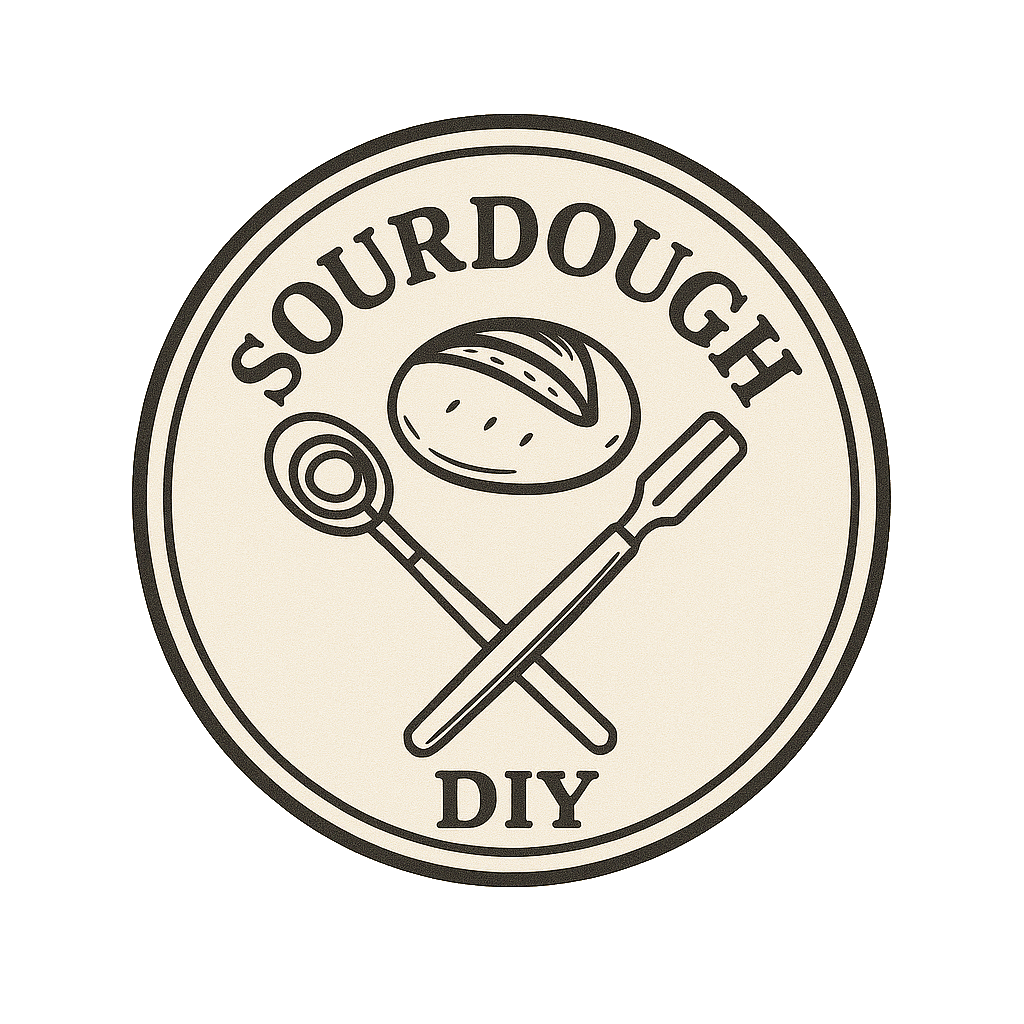
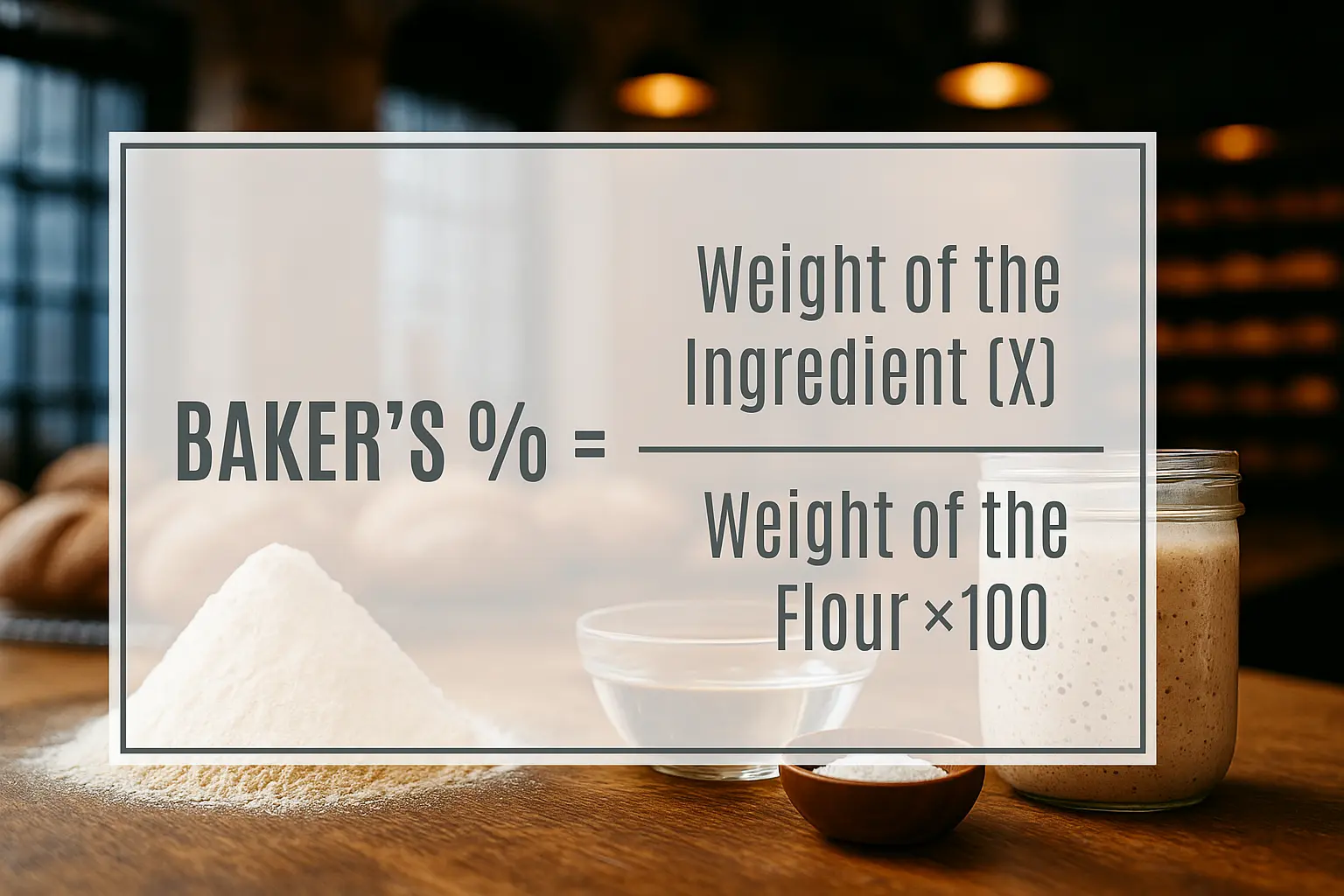
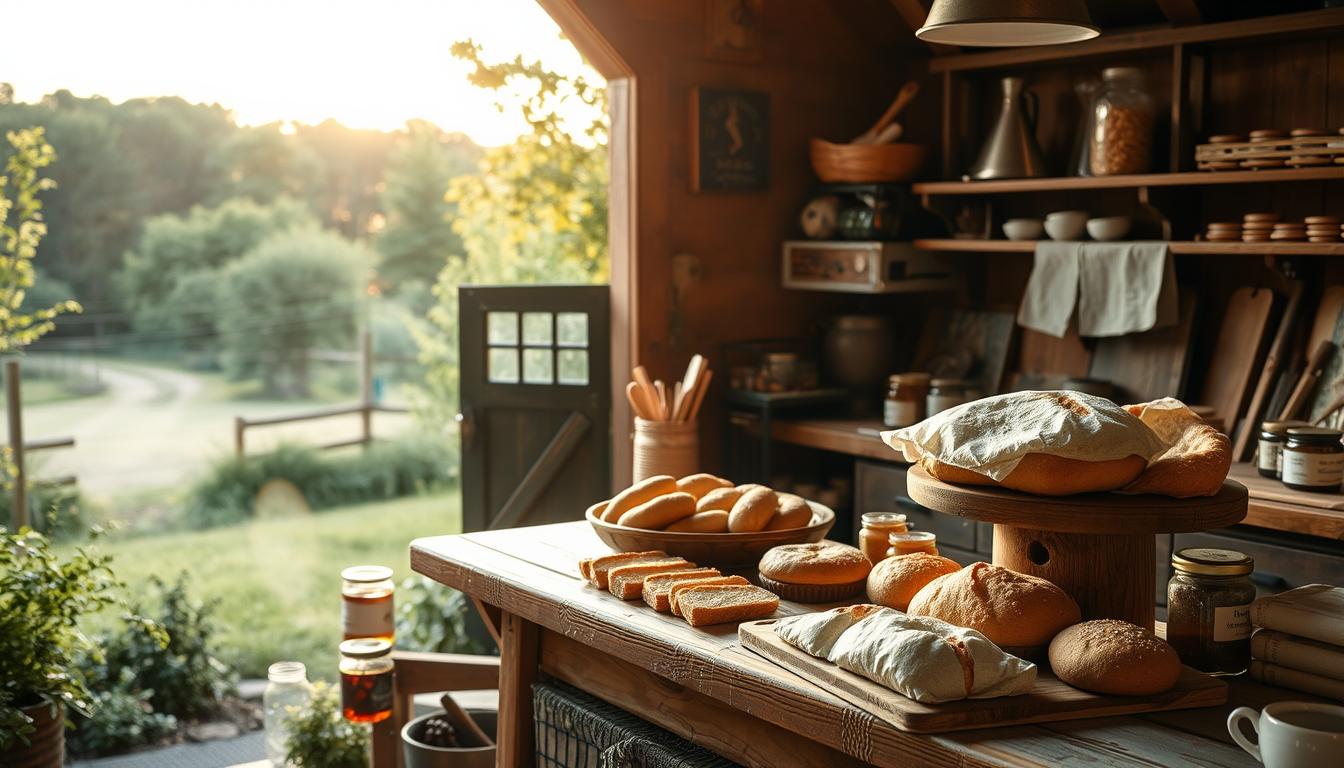
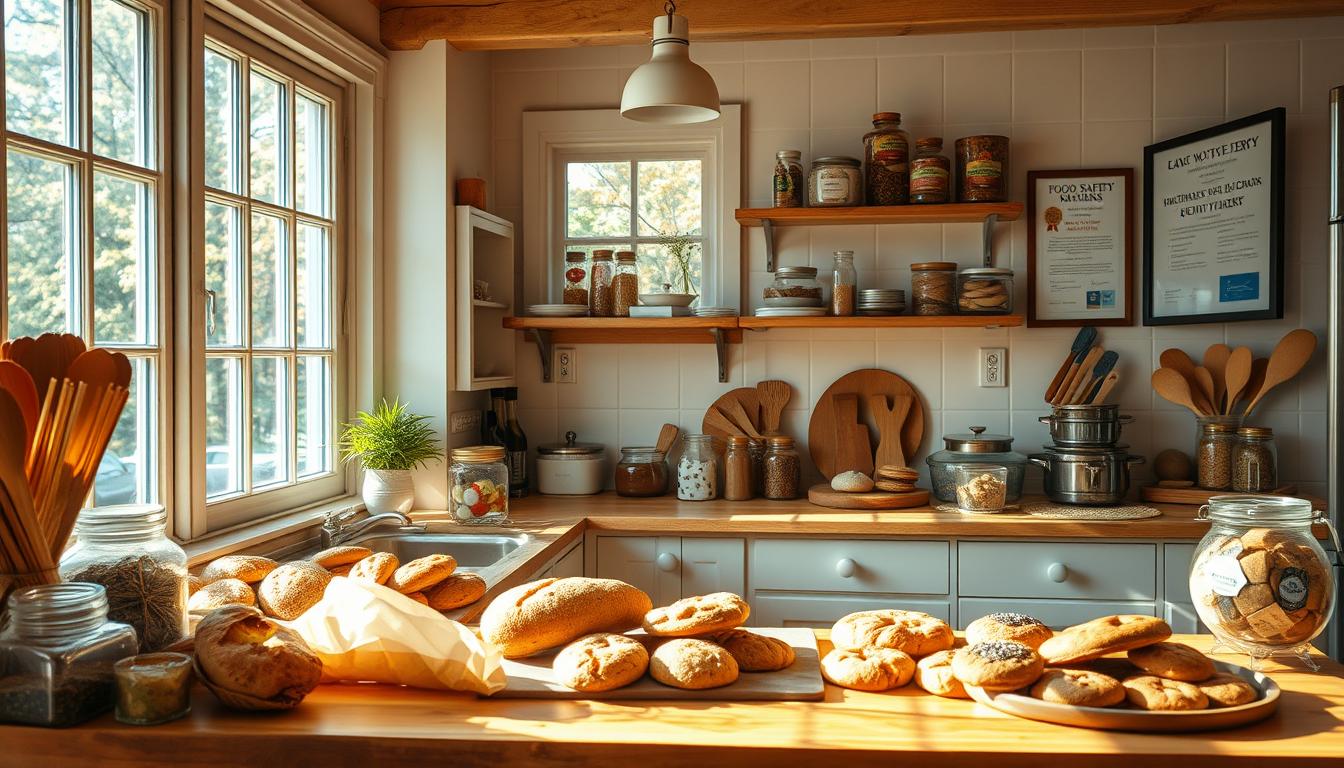
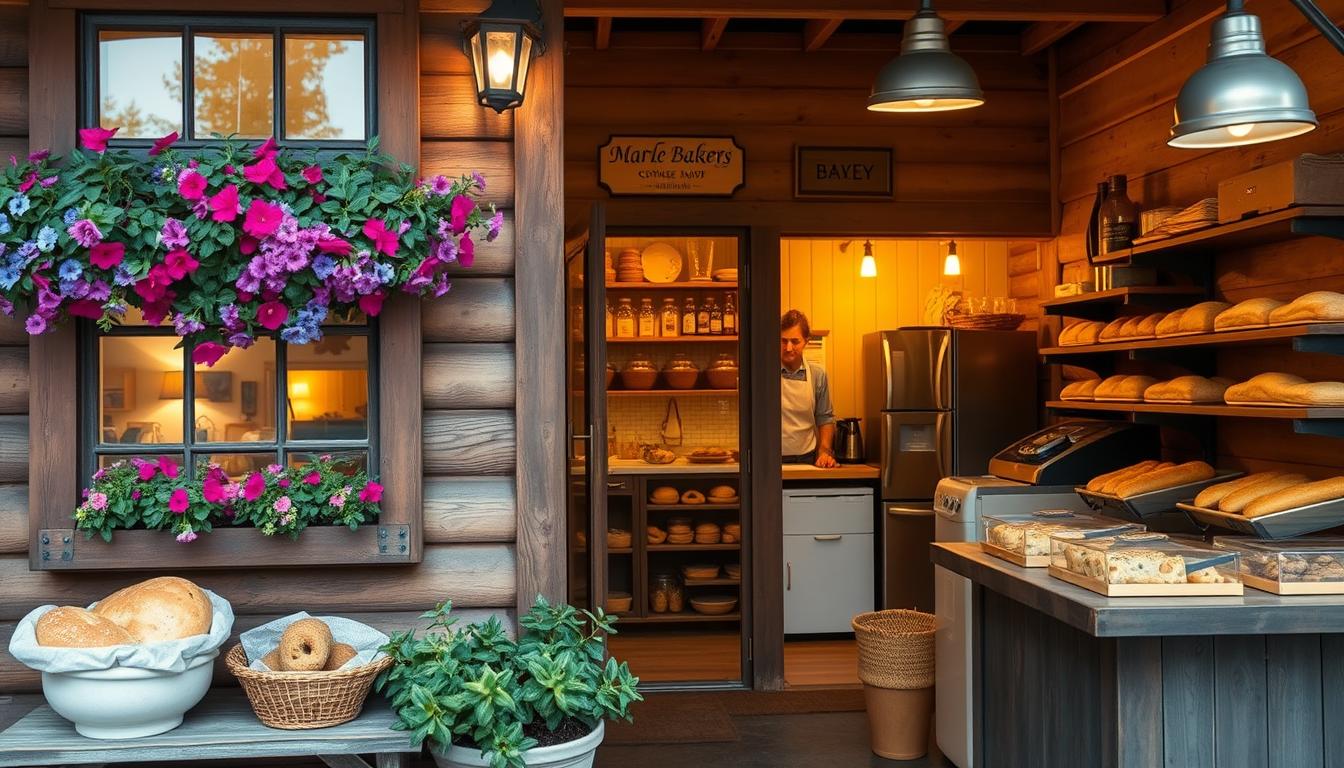
Leave a Reply